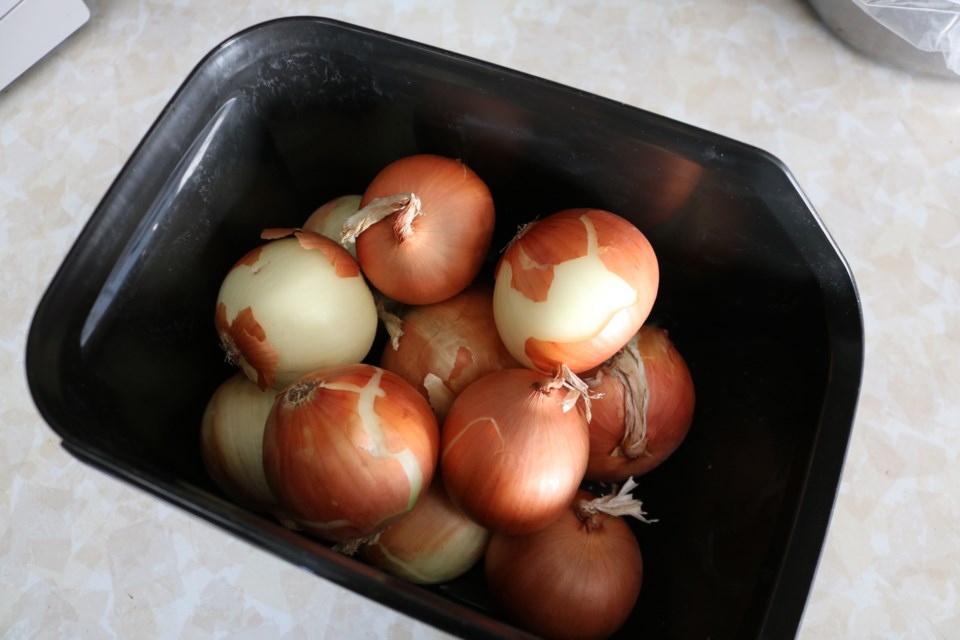Onions are probably one of the most-used and best-loved flavors in many dishes and many cultures all around the world. At this time of year, just think of all the yummy dishes that have onions; cabbage rolls; borscht; adding flavor to roast turkey; sauerkraut and peas; broad beans; and of course, yummy perogies with generous amounts of golden onions fried in butter.
Onions belong to the allium family, along with their cousins leeks, chives and garlic. Onions have been around for thousands of years, probably originally calling Central Asia home. There were a lot of positive qualities about onions: they were easy to grow, added great flavor, and the bulbs were easy to take along when people moved from one place to another. I read that onions were among the very first things planted by the pilgrims when they came to North America.
Various cultures gave the everyday common onion the respect they believed it deserved. Egyptians used onions are part of their burial practises; and the Romans had a firm belief that onions had great medicinal powers. I read that in Pompeii, which was buried by a volcanic eruption in 79AD, there were onions planted in their gardens. The gardens were documented at the time, and now archaeologists are discovering signs of the gardens as they slowly work to unearth Pompeii, imagine! We were there years ago, but as we walked through the site I never imagined that the community contained gardeners who planted onions!
So now we come forward thousands of years, and much of our love affair with onions has remained the same. Easy to grow, flavorful, and easy to plant. Plus there are yummy varieties for us to choose from: every kitchen has the versatile yellow onion; add a dash of elegance to salads with red onion; and the white onion looks delicious in sandwiches or on hamburgers.
Whether we grow them from seed or by plantings the bulbs (sets), onions like well drained, loose soil and lots of sun. They don’t do that well in heavy or clay soils. Starting the onions from sets is much easier and gives the onions a head start. Pop them in the ground and that’s it! Bulbs start to form after about twelve weeks. You may have read that onions are “day-length” sensitive, and this can scare us because we think we have to do something unusual to get them to grow. But fear not: it merely means that onions require a certain amount of sunlight each day before the bulbs will begin to form. Most of the onions we grow are “intermediate day” onions, and if they get twelve or more hours of sunlight, they will do their thing and form bulbs.
At the end of the season, we harvest them, leave them to dry or “cure” for a few days, then bring them indoors to enjoy for a long time. But we shouldn’t store our onions near apples; they will begin to exchange flavors. And storing onions near potatoes could make them spoil.
The scent of onions cooking or frying takes me back to Christmas preparations in Sweet Pea’s cozy kitchen. She was an excellent cook, but those special dishes that were made at Christmas were made with such love and such a sense of tradition that they tasted extra-extra delicious. We make them still, but in my mind they will never taste as scrumptious as when Mom made them for us. Thank you, Mom. Visit the horticultural society at www.yorktonhort.ca Thank you to our friends at YTW for their great work. Have a good week!




